Wolstenholme Towne: Lost Virginia Settlement – Destroyed, Abandoned And Forgotten
A. Sutherland - AncientPages.com - Usually, when a site was occupied for a short time before it was attacked and destroyed, it can act as a "time capsule," which provides archaeologists with several important pieces of evidence in the form of artifacts related only to this particular place.
Credit: Adobe Stock - QatlasMap
Wolstenholme Towne is one such place near Williamsburg, Virginia, United States.
The town was wiped out by the Indians in 1622 and left forgotten for almost four centuries.
In the 1970s, Ivor Noël Hume, a British-born archaeologist in the United States and one of the founders of historical archaeology in North America, searched for signs of another, later 18th-century plantation of Carter Grove.
He unexpectedly discovered a face-covering helmet from a suit of armor and other remnants of a fortified town, Wolstenholme, built about 1620.
The discovery resulted in many excavations at the site and gave insights into the daily life of people in this short-lived settlement. Wolstenholme Towne was only occupied for a few years before it was attacked, destroyed, and abandoned.
It was the central town of Martin's Hundred, a plantation occupying more than 20,000 acres and one of many private British plantations established in the early 17th century.
The colony was established in 1619 on the James River by about 200 settlers, who called themselves "Martin's Hundred." They settled 10 miles down the river and named their settlement - Wolstenholme Towne.
Unfortunately, the Towne and its people did not survive. On March 22, 1622, over half of the settlers were massacred in a significant Indian uprising.
A few survivors and some new settlers attempted to rebuild the site, but the disease took its toll, and the place was abandoned and long forgotten. Part of it has probably been washed away by the James River. Some surviving historical documents shed some light on the settlement and its inhabitants.
According to records, excavations of the site that began in 1977 revealed information about storehouses, dwellings, and a timber fort. Many British and European artifacts of the 17th century were unearthed at the site and later brought to America.
They include pottery, armor, weapons (iron helmets), and many domestic and agricultural items. The excavations have revealed the graves of forty-eight settlers, some of them hastily buried after the massacre; others were buried in coffins with gabled lids, similar to English coffins dated to the same period.
The findings confirm the tragedy that happened there at Wolstenholme Towne.
Updated on December 9, 2021
Written by – A. Sutherland AncientPages.com Staff Writer
Updated on December 7, 2022
Copyright © AncientPages.com All rights reserved. This material may not be published, broadcast, rewritten or redistributed in whole or part without the express written permission of AncientPages.com
Expand for referencesMore From Ancient Pages
-
 Large, High-Elevation Cities Along Asia’s Silk Roads Exposed By High-Res Lidar
Archaeology | Oct 23, 2024
Large, High-Elevation Cities Along Asia’s Silk Roads Exposed By High-Res Lidar
Archaeology | Oct 23, 2024 -
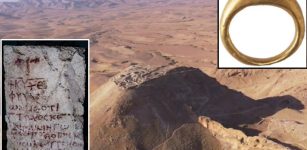 Byzantine Greek Inscription Of Psalms 86 Found In Hyrcania
Archaeology | Sep 29, 2023
Byzantine Greek Inscription Of Psalms 86 Found In Hyrcania
Archaeology | Sep 29, 2023 -
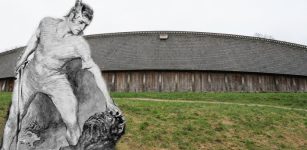 Lejre Viking Hall And Beowulf – What Is The Connection?
Featured Stories | Jun 3, 2024
Lejre Viking Hall And Beowulf – What Is The Connection?
Featured Stories | Jun 3, 2024 -
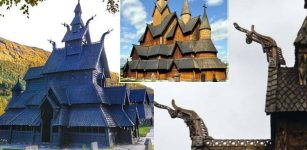 Unique Wooden Stave Churches Were Built Without Nails – Remarkable Technology Helped Them Survive
Featured Stories | Nov 15, 2022
Unique Wooden Stave Churches Were Built Without Nails – Remarkable Technology Helped Them Survive
Featured Stories | Nov 15, 2022 -
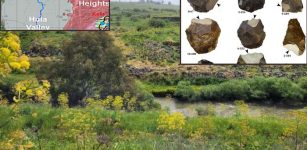 Early Humans In The Hula Valley Invested In Systematic Procurement Of Raw Materials Hundreds Of Thousands Of Years Ago
Archaeology | Jul 19, 2023
Early Humans In The Hula Valley Invested In Systematic Procurement Of Raw Materials Hundreds Of Thousands Of Years Ago
Archaeology | Jul 19, 2023 -
 The First Australians Ate Giant Eggs Of Huge Flightless Birds That Went Excinct Over 47,000 Years Ago
Archaeology | May 25, 2022
The First Australians Ate Giant Eggs Of Huge Flightless Birds That Went Excinct Over 47,000 Years Ago
Archaeology | May 25, 2022 -
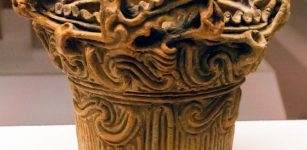 Surprising New Insights Into Use And Increased Production Of Pottery At The End Of The Last Ice Age
Archaeology | Mar 22, 2016
Surprising New Insights Into Use And Increased Production Of Pottery At The End Of The Last Ice Age
Archaeology | Mar 22, 2016 -
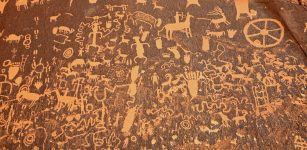 Newspaper Rock Art: Ancient Indian Petroglyphs Tell 2,000-Year-Old Story Of Utah
Civilizations | Nov 28, 2018
Newspaper Rock Art: Ancient Indian Petroglyphs Tell 2,000-Year-Old Story Of Utah
Civilizations | Nov 28, 2018 -
 Strange Story Of Tecumseh’s Comet, Black Sun Prophecy And New Madrid Earthquakes – The Biggest Earthquakes In American History
Featured Stories | Nov 14, 2018
Strange Story Of Tecumseh’s Comet, Black Sun Prophecy And New Madrid Earthquakes – The Biggest Earthquakes In American History
Featured Stories | Nov 14, 2018 -
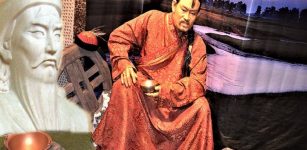 Jamukha: Mongolian Leader, Military And Childhood Friend Of Genghis Khan But Not Forever
Featured Stories | May 8, 2019
Jamukha: Mongolian Leader, Military And Childhood Friend Of Genghis Khan But Not Forever
Featured Stories | May 8, 2019 -
 Gigantic Kailasa Temple: Engineering Marvel Of India’s Master Builders
Featured Stories | Oct 17, 2020
Gigantic Kailasa Temple: Engineering Marvel Of India’s Master Builders
Featured Stories | Oct 17, 2020 -
 Accidental Discovery Of Large Trove Of 14th Century Gold And Silver Coins In West Bohemia
Archaeology | Aug 13, 2020
Accidental Discovery Of Large Trove Of 14th Century Gold And Silver Coins In West Bohemia
Archaeology | Aug 13, 2020 -
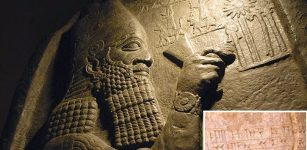 Clay Tablets Of Assyrian ‘King Of The World’ Esarhaddon Found Beneath Biblical Tomb Of Jonah
Archaeology | Mar 1, 2018
Clay Tablets Of Assyrian ‘King Of The World’ Esarhaddon Found Beneath Biblical Tomb Of Jonah
Archaeology | Mar 1, 2018 -
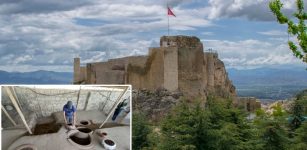 1,000-Year-Old Palace Kitchen With A Cannonball Inside An Oven Found At Harput Castle In Elazig, Turkey
Archaeology | Aug 28, 2023
1,000-Year-Old Palace Kitchen With A Cannonball Inside An Oven Found At Harput Castle In Elazig, Turkey
Archaeology | Aug 28, 2023 -
 Secret Tunnel Leads To Christian Chapel In Ancient Suomela Monastery In Turkey
Archaeology | Dec 27, 2017
Secret Tunnel Leads To Christian Chapel In Ancient Suomela Monastery In Turkey
Archaeology | Dec 27, 2017 -
 ‘Throughout All Days And Nights, Forever’: Could An 11th-Century Contract Show Same-Sex Marriage In Medieval Spain?
Featured Stories | Aug 23, 2024
‘Throughout All Days And Nights, Forever’: Could An 11th-Century Contract Show Same-Sex Marriage In Medieval Spain?
Featured Stories | Aug 23, 2024 -
 Aboriginal People Made Pottery And Navigated To Remote Islands Millennia Before Europeans Arrived
Featured Stories | Aug 19, 2024
Aboriginal People Made Pottery And Navigated To Remote Islands Millennia Before Europeans Arrived
Featured Stories | Aug 19, 2024 -
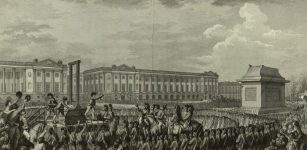 On This Day In History: King Louis XVI Was Executed By Guillotine In Paris – On Jan 21, 1793
News | Jan 21, 2017
On This Day In History: King Louis XVI Was Executed By Guillotine In Paris – On Jan 21, 1793
News | Jan 21, 2017 -
 Perplexing Accounts Of Ancient People Who Demonstrated Incredible Powers Of The Human Mind
Featured Stories | Feb 1, 2019
Perplexing Accounts Of Ancient People Who Demonstrated Incredible Powers Of The Human Mind
Featured Stories | Feb 1, 2019 -
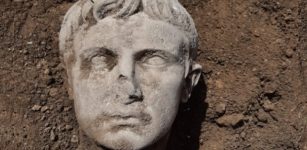 Marble Head Of Roman Emperor Augustus Unearthed In Isernia, Italy
Archaeology | May 7, 2021
Marble Head Of Roman Emperor Augustus Unearthed In Isernia, Italy
Archaeology | May 7, 2021

